Text
Giants of the Seas: The Biggest Ships in the World

The world’s biggest ships are marvels of engineering, towering over the water and showcasing extraordinary dimensions, cutting-edge design, and impressive capabilities. Here’s a detailed look at the largest ships ever built, listed in descending order of their size, complete with their dimensions, architects, budgets, owners, routes, purposes, and amenities.
1. Seawise Giant
The Seawise Giant, otherwise known as Oppama, Happy Giant, Jahre Viking, Knock Nevis, and Mont, was the largest ship to have ever been built. Its dimensions are 1,504ft (458.45m) in length and 226ft (68.8m) in width. Seawise Giant was constructed in 1979 by Sumitomo Heavy Industries. It was scrapped for parts in 2010.

2. Batillus Class
The Batillus Class supertankers were in service from 1976 to 2003. They are approximately 1,359ft (414m) in length and 211ft (64m) in width. Bautillus Class was designed by the shipyard, Chantiers de l’Atlantique.

3. Esso Atlantic/Esso Pacific
The two ships in the Esso Atlantic class — Esso Atlantic and Esso Pacific were built in 1977 by Hitachi Zosen Corporation Ariake. They measure approximately 1,334ft (407m) in length and 163ft (49.7m) in width. Both Esso Atlantic and Esso Pacific were scrapped in 2002.

4. Mol Triumph Class
The Mol Triumph class was built by Samsung Heavy Industries in 2017. They measure 1,312ft (400m) in length and 197ft (60m) in width.
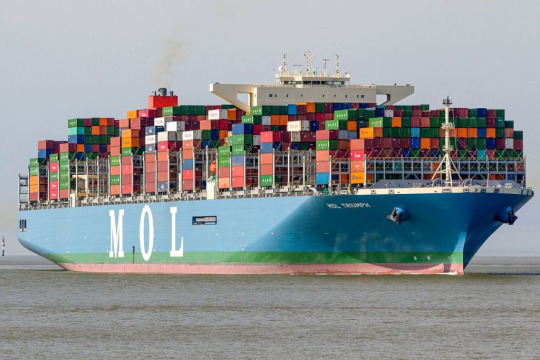
5. Pioneering Spirit
The Pioneering Spirit or Pieter Schelte has the dimensions of 1,253ft (381m) in length and 407ft (124m) in width. It was launched in 2013 by the Swiss conglomerate, Allseas Group.

6. Oasis Class
The Oasis Class is a group of 7 Royal Caribbean International (RCI) cruise ships. The first cruise ship was launched in 2009. The ship is approximately 1,187ft (362m) in length and 208ft (63.7m) in width. Oasis Class was built by STX Finland Turku Shipyard and Chantiers de l’Atlantique.

7. Valemax
Valemax ships are ore carriers measuring 1,181ft (360m) in length and 207ft (63m) in width. It is owned and operated by Vale SA, a Brazilian mining company. Valemax ships were designed by Daewoo Shipbuilding & Marine Engineering. It has been in service since 2011.
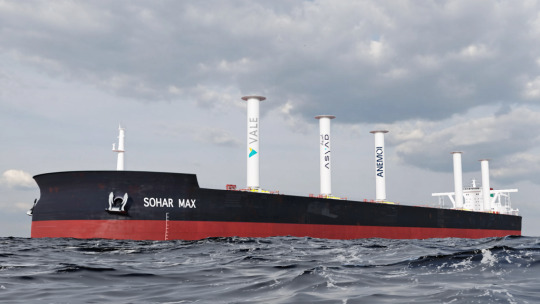
8. Quantum Class
RCI also operates the Quantum Class cruise ships. These ships are 1,141ft (348 m) in length and 136ft (41.4m) in width. It was designed by the architectural firm, Meyer Werft. Quantum Class took its first sail in 2014.

9. Queen Mary 2
The RMS Queen Mary 2 is 1,132ft (345m) in length and 131ft (40m) in width. It was designed by the naval architect Stephen Payne. Queen Mary 2 was launched in 2003 and has been owned by Cunard Line.
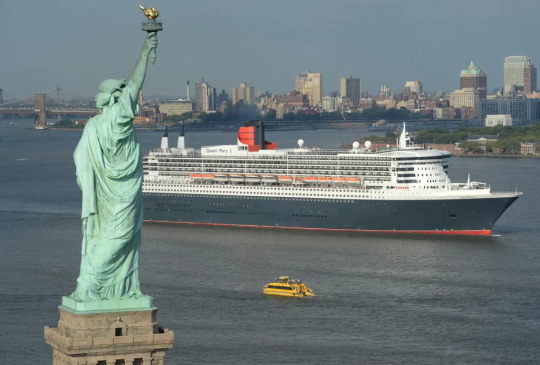
10. Berge Stahl
The MS Berge Stahl measured 1,123ft (342m) in length and 188ft (57.5m) in width. The ship was built by Hyundai Heavy Industries in 1986. The Berge Stahl was scrapped in July 2021.

These colossal ships represent the pinnacle of maritime engineering, each serving specific purposes with unique design features and amenities. From luxury cruise liners like the Queen Mary 2 to massive cargo carriers like the Seawise Giant, they showcase human ingenuity and the ability to master the vastness of the oceans.
0 notes
Text
Ai Weiwei’s Art as Political Commentary: A Philosophical Exploration of Resistance and Identity
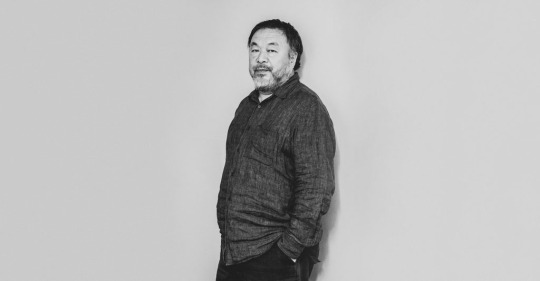
Introduction
A strong figure in contemporary art and activism, Ai Weiwei has consistently used his work to challenge political and social norms. Born in Beijing in 1957, Ai grew up during the turbulent years of the Cultural Revolution, marked by political repression and cultural upheaval. His early experiences in China, along with later exposure to Western art and philosophy during his time in the United States, shaped his artistic vision and ideological stance. Ai Weiwei’s philosophy is deeply intertwined with his art, making him a unique voice in the modern era. His work transcends traditional boundaries, combining art with activism to criticize authoritarianism, promote human rights, and explore issues of freedom and identity. Ai challenges both the global art community and the Chinese government through provocative installations, conceptual art and public commentary, often placing himself in precarious positions..
This essay delves into Ai Weiwei’s philosophical framework and examines how his personal history and political context influenced his artistic practice and public attitudes. Analyzing his most important works of art and activism, we explore how Ai’s philosophy reflects his commitment to freedom of expression and his critique of power structures. In addition, we explore the wider implications of his work, assessing how it resonates with global issues and contributes to ongoing debates about art and politics. The purpose of this essay is to provide a comprehensive understanding of the philosophy of Ai Weiwei and highlight his important contributions. to modern thinking and the impact of his work on both art and society. Through this study, we gain insight into how Ai Weiwei navigates the intersection of creativity and political dissent, and how his approach challenges us to think about the role of art in solving social problems..
Early Influences and Background
Ai Weiwei’s artistic and philosophical perspectives are deeply rooted in his early life experiences and cultural context. Born in Beijing in 1957, Ai’s formative years were shaped by the profound political and social upheavals of the Cultural Revolution. This period, which began in 1966, was characterized by intense ideological campaigns led by Chairman Mao Zedong, aimed at preserving Communist ideology and purging remnants of capitalist and traditional elements from Chinese society.
1. Cultural Revolution and Its Impact
During the Cultural Revolution, Ai’s father, Ai Qing, a renowned poet and a former political prisoner, was persecuted for his political beliefs and demoted to a labor camp in rural China. Ai Weiwei and his family were subjected to harsh conditions, including forced relocation to a remote area in Xinjiang. This period of hardship profoundly impacted Ai, instilling in him a deep sense of the fragility of individual freedoms and the injustices of authoritarian rule. The experiences of censorship, repression, and the denial of basic freedoms during this era had a lasting effect on Ai Weiwei’s worldview. These formative years exposed him to the stark realities of political oppression and the resilience of the human spirit, themes that would later become central to his art and activism.
2. Education and Exposure to Western Art
In 1981, Ai Weiwei left China for the United States, where he spent over a decade studying and working in New York City. This period was crucial in broadening his artistic horizons and exposing him to Western art movements and philosophies. Ai attended Parsons School of Design, where he was influenced by the avant-garde movements and conceptual art practices of the time. His exposure to Western artists like Marcel Duchamp and Andy Warhol significantly impacted his approach to art, particularly in his use of found objects and conceptual strategies During his time in New York, Ai also encountered a vibrant artistic community and began to develop his unique voice, blending traditional Chinese aesthetics with contemporary methods. This cross-cultural experience allowed him to critically engage with both Western and Eastern art forms, shaping his distinctive approach to art and activism.
3. Return to China and Artistic Development
Upon returning to China in 1993, Ai Weiwei found himself at the forefront of a rapidly changing art scene. The economic reforms and opening up of China had ushered in a period of rapid modernisation and global integration, presenting both opportunities and challenges for artists. Ai’s return coincided with this transformation, allowing him to play a pivotal role in redefining contemporary Chinese art. Ai Weiwei’s early works upon his return reflected his ongoing concerns with political repression, cultural identity, and the effects of globalization. His art began to incorporate elements of traditional Chinese culture while addressing contemporary issues such as government corruption, human rights abuses, and the loss of cultural heritage. This synthesis of traditional and modern influences became a hallmark of his work, illustrating his commitment to both preserving and critiquing aspects of Chinese culture.
Art as Political Commentary
Ai Weiwei’s art is not merely a medium of self-expression but a powerful tool for political commentary and social critique. His works often confront issues of authority, freedom, and human rights, challenging both Chinese political structures and broader global injustices. This section explores how Ai uses art to articulate his political beliefs and the thematic concerns that underpin his practice.
1. Iconic Works and Their Political Messages
a. “Sunflower Seeds” (2010)
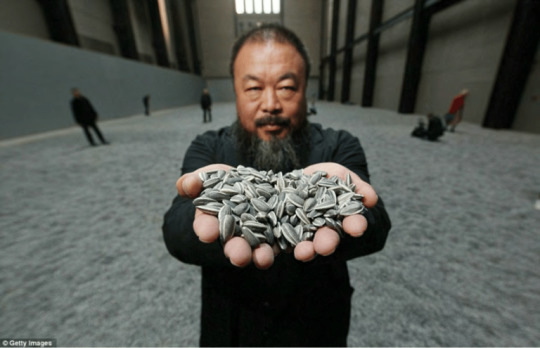
Ai Weiwei with his ‘Sunflower seeds’ (2010) 30 | Courtesy: Download Scientific Diagram
One of Ai Weiwei’s most renowned installations, “Sunflower Seeds'' consists of over 100 million hand-crafted porcelain seeds spread across a large gallery floor. Each seed was individually sculpted and painted by artisans in Jingdezhen, a city renowned for its porcelain production. On the surface, the work appears to celebrate Chinese craftsmanship and communal effort. However, it also serves as a critique of mass consumption and the dehumanizing effects of industrial production.
The vast scale of the installation, combined with the painstakingly detailed craftsmanship, reflects Ai’s commentary on the homogenisation and loss of individuality under authoritarian regimes. The work also subtly references the Cultural Revolution, during which sunflower seeds were used as symbols of Mao Zedong’s propaganda. By reclaiming this symbol and subverting its meaning, Ai challenges the narrative of conformity and control.
b. “Dropping a Han Dynasty Urn” (1995)
In this provocative performance piece, Ai Weiwei filmed himself dropping a priceless Han Dynasty urn, shattering it into pieces. This act of destruction, while seemingly destructive, is a deliberate critique of the preservation of cultural heritage at the expense of progress and critical engagement. Ai’s act of breaking the urn questions the sanctity of cultural artifacts and the extent to which historical legacy should dictate contemporary values.
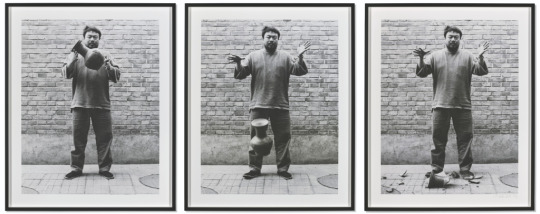
AI WEIWEI (B. 1957), Dropping a Han Dynasty Urn | Courtesy: Christie’sVisit
The piece also reflects Ai’s view on the interplay between past and present, suggesting that clinging too tightly to historical artifacts can hinder social and political development. By destroying a symbol of ancient Chinese culture, Ai invites viewers to consider the value of tradition in a rapidly changing world.
c. “Fu*k Off” (2009)
The “Fu*k Off” exhibition, which Ai co-curated with other dissident artists, was a direct response to the political censorship and repression faced by contemporary Chinese artists. The title itself is a defiant gesture against the Chinese government’s attempts to silence dissent. The exhibition featured works that addressed themes of resistance, censorship, and the struggle for artistic freedom, underscoring Ai’s commitment to challenging authoritarian control.
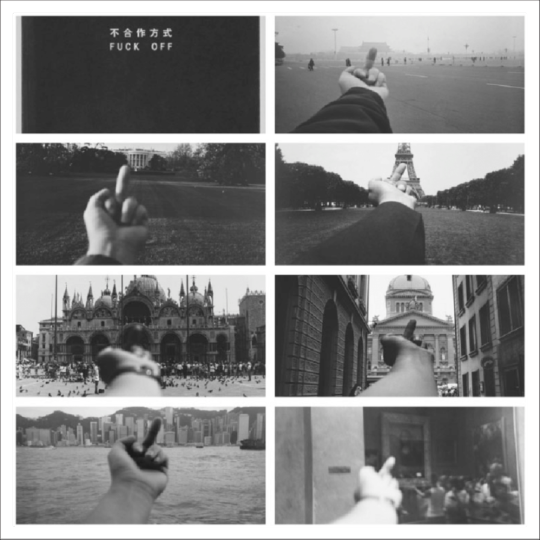
This exhibition exemplifies Ai Weiwei’s use of art as a form of protest and his willingness to confront political power head-on. The provocative nature of the exhibition and its title highlights Ai’s belief in the necessity of confronting oppressive systems, even at personal risk.
2. Artistic Methodology and Political Engagement
a. Use of Traditional Techniques
Ai Weiwei often employs traditional Chinese art forms and materials in innovative ways to address contemporary issues. By integrating elements such as porcelain, wood, and traditional craftsmanship with modern concepts and critiques, Ai bridges the gap between historical and contemporary contexts. This approach allows him to engage with cultural heritage while simultaneously questioning its role in modern society.
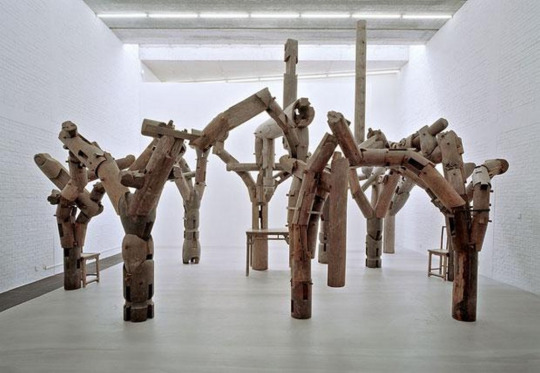
Ai Weiwei Fragment 2005| (Ai Weiwei Studio © Ai Weiwei. Hong Kong. By donation)
b. Public Installations and Social Media
Ai’s public art installations and use of social media platforms have amplified his political messages. Works such as “Remembering” (2009), which features 9,000 children’s backpacks arranged to spell out the names of victims of the 2008 Sichuan earthquake, not only serve as poignant memorials but also as critiques of the government’s handling of the disaster. Ai’s strategic use of social media has enabled him to reach a global audience and mobilize support for his causes, often in defiance of state censorship.
3. The Intersection of Art and Activism
Ai Weiwei’s art is deeply intertwined with his activism. His works often reflect his ongoing struggle against political oppression, censorship, and human rights abuses. Through his art, Ai raises awareness of these issues and challenges both viewers and authorities to confront uncomfortable truths. His willingness to use his artistic platform to address political and social issues underscores his belief in art as a powerful instrument for change.
Activism and Human Rights
Ai Weiwei’s activism is deeply interwoven with his artistic practice, reflecting his unwavering commitment to human rights and social justice. His activism extends beyond his artworks, encompassing public commentary, direct action, and engagement with international audiences. This section examines Ai Weiwei’s activism, focusing on his efforts in human rights advocacy, his confrontations with the Chinese government, and the impact of his activism on both his art and personal life.
1. Advocacy for Human Rights
a. Critique of Government Corruption and Inefficiency
Ai Weiwei’s activism is often directed at exposing and critiquing government corruption and inefficiency. One of the most significant instances of this was his response to the 2008 Sichuan earthquake. After the disaster, Ai launched an investigation into the poorly constructed school buildings that collapsed, resulting in the deaths of thousands of children. His investigation revealed widespread corruption and negligence in the construction industry, which he documented and publicized through his art and social media.
Ai’s work on this issue culminated in the installation “Remembering” (2009), which features thousands of children’s backpacks arranged in a grid to spell out the phrase “She lived happily for seven years in this world.” The installation serves as both a tribute to the victims and a critique of the government’s failure to protect its citizens. This project highlighted Ai’s dedication to holding authorities accountable and advocating for justice for the victims of systemic failures.
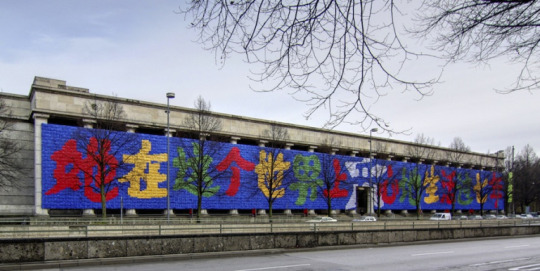
Ai Weiwei, Remembering, 2009, backpacks on the facade of the Haus der Kunst* (Munich)| Courtesy: Khan Academy
b. Advocacy for Freedom of Expression
Ai Weiwei is a staunch advocate for freedom of expression and has used his platform to speak out against censorship and repression. His outspoken criticism of the Chinese government, particularly regarding issues of freedom of speech and human rights, has led to significant personal risk. In 2011, Ai was detained for 81 days by Chinese authorities, ostensibly on charges of tax evasion, but widely believed to be a response to his activism and criticism of the government.
During his detention, Ai’s international supporters rallied for his release, drawing global attention to his case and highlighting the broader issue of government suppression of dissent. Ai’s detention and subsequent release further underscored his commitment to advocating for freedom of expression, even in the face of personal danger.
2. Confrontations with the Chinese Government
a. Surveillance and Repression
Ai Weiwei’s critical stance towards the Chinese government has resulted in ongoing surveillance and harassment. Authorities have subjected him to constant monitoring, and his movements and communications are frequently scrutinized. Despite these challenges, Ai has continued to use his art and public platform to challenge government policies and advocate for human rights.
b. Legal and Financial Repercussions
In addition to his detention, Ai Weiwei has faced various legal and financial repercussions as a result of his activism. His studio in Beijing was demolished in 2018, a move that was widely interpreted as retaliation for his political activities. He has also been subject to significant financial penalties and legal battles, further illustrating the personal costs of his activism.
Despite these challenges, Ai remains undeterred in his advocacy. His resilience in the face of repression highlights his unwavering commitment to his causes and his belief in the transformative power of art and activism.
3. Impact on Art and Global Awareness
a. Art as a Catalyst for Change
Ai Weiwei’s activism has had a profound impact on his art, infusing it with a sense of urgency and purpose. His works often address pressing social and political issues, using art as a means to raise awareness and inspire change. By blending artistic expression with activism, Ai has demonstrated the potential of art to address real-world problems and provoke meaningful dialogue.
b. Global Reach and Influence
Ai Weiwei’s activism has resonated globally, reaching audiences far beyond China. His use of social media, international exhibitions, and public speaking engagements has enabled him to mobilize support and bring attention to issues of human rights and political oppression. This global reach has amplified his impact, contributing to a broader conversation about the role of art in social and political activism.
c. Collaboration with International Organizations
Ai has collaborated with various international organisations and human rights groups to further his advocacy efforts. These collaborations have provided additional platforms for his activism and helped to build networks of support for his causes. By working with global allies, Ai has extended the reach of his message and strengthened the impact of his advocacy.
Philosophical Themes
Ai Weiwei’s art and activism are deeply intertwined with his philosophical outlook, reflecting his views on freedom, identity, and the role of tradition in modern society. His works often explore complex philosophical themes, challenging viewers to engage with the underlying issues of power, repression, and cultural heritage. This section examines key philosophical themes in Ai Weiwei’s work, focusing on freedom of expression, cultural identity, and global perspectives.
1. Freedom and Expression
a. The Right to Speak
At the core of Ai Weiwei’s philosophy is a staunch belief in the fundamental right to freedom of expression. His art and activism frequently address the importance of speaking out against authoritarianism and censorship. Ai’s work underscores the idea that freedom of expression is essential for a just society, and his own experiences with repression highlight the personal and collective costs of denying this right.
For instance, Ai’s installations and public statements often challenge the restrictions imposed by the Chinese government, advocating for a more open and democratic society. By using art to critique political power and champion freedom of speech, Ai not only addresses the specific issues of his context but also contributes to a broader dialogue about human rights and democratic values.
b. Art as Protest
Ai Weiwei views art as a powerful form of protest and resistance. His provocative works, such as “Dropping a Han Dynasty Urn” and “Sunflower Seeds”, serve as acts of defiance against oppressive systems. Through these works, Ai engages with the concept of art as a vehicle for political commentary and social change. His approach emphasizes that art should not only be an aesthetic experience but also a catalyst for critical reflection and action.
2. Cultural Identity
a. Tradition vs. Modernity
Ai Weiwei’s exploration of cultural identity involves a critical examination of the relationship between tradition and modernity. His use of traditional Chinese materials and techniques in contemporary contexts reflects his engagement with cultural heritage while also questioning its relevance in the modern world. By juxtaposing traditional craftsmanship with modern concepts, Ai highlights the tensions between preserving cultural identity and embracing progress.
Works such as “Sunflower Seeds” and “Fairy Tales” illustrate Ai’s attempt to reconcile these conflicting elements. His art often critiques the notion that tradition should be preserved uncritically, suggesting instead that cultural heritage should be continuously re-evaluated and reinterpreted in light of contemporary issues.
b. Nationalism and Globalization
Ai Weiwei’s work also addresses the impact of nationalism and globalization on cultural identity. His art reflects concerns about the erosion of cultural values and the homogenizing effects of global capitalism. For example, Ai’s critique of the commodification of Chinese culture in the global market challenges the ways in which cultural artifacts are transformed into consumer goods, questioning the authenticity and integrity of cultural identity in a globalized world.
3. Global Perspective
a. Art and Universal Values
Ai Weiwei’s philosophy extends beyond the context of Chinese politics, engaging with universal values such as human rights, justice, and equality. His global perspective is evident in his collaborations with international organizations and his participation in global dialogues on human rights and social justice. Through his art, Ai addresses issues that resonate with audiences worldwide, emphasising the interconnectedness of global struggles for freedom and dignity.
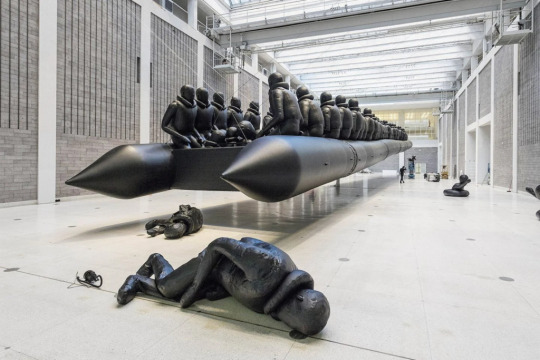
Ai Weiwei’s Colossal New Refugee Boat Installation| Courtesy: IGNANT
Works like “Refugee Boat” and “The Bird’s Nest” symbolize his concern with global crises and the shared human experience. By addressing issues such as migration, displacement, and environmental degradation, Ai’s art calls for a collective response to global challenges and underscores the importance of solidarity and empathy in addressing these issues.
b. Critique of Global Power Structures
Ai Weiwei’s art also critiques global power structures and the influence of international institutions. His works often question the roles of political and economic powers in shaping global dynamics and perpetuating inequalities. For example, his engagement with issues such as the refugee crisis and environmental degradation highlights the failures of global governance and the need for more equitable and humane policies.
4. Individual vs. Collective
a. The Role of the Individual
Ai Weiwei’s art frequently explores the tension between individual agency and collective identity. His works often focus on the experiences of individuals within larger social and political systems, emphasizing the impact of collective actions on personal lives. By highlighting the struggles and resilience of individuals, Ai underscores the importance of personal agency in effecting social change.
b. Collective Memory and Identity
Ai’s art also engages with the concept of collective memory and identity, particularly in relation to historical events and cultural heritage. His installations often address the ways in which collective experiences shape individual and national identities. Through works that memorialize historical events and critique cultural practices, Ai explores the ways in which collective memory influences contemporary social and political landscapes.
Conclusion
Ai Weiwei’s art and activism embody a profound commitment to challenging oppressive systems and advocating for human rights. Through his innovative use of traditional materials and his confrontational approach to political commentary, Ai has established himself as a powerful voice in contemporary discourse. His works address complex themes such as freedom of expression, cultural identity, and global injustice, reflecting his belief in art’s capacity to inspire change and provoke critical reflection. Ai Weiwei’s philosophy underscores the role of art as a catalyst for social and political transformation. By blending artistic expression with activism, he demonstrates the potential of art to engage with and challenge the power structures that shape our world. His global perspective and relentless pursuit of justice highlight the interconnectedness of individual and collective struggles, reaffirming the significance of art in addressing universal human concerns. In examining Ai Weiwei’s contributions, we gain insight into the transformative power of art and the enduring relevance of his philosophical outlook in the quest for a more equitable and just society.
0 notes
Text
Top 11 Castles in the United States
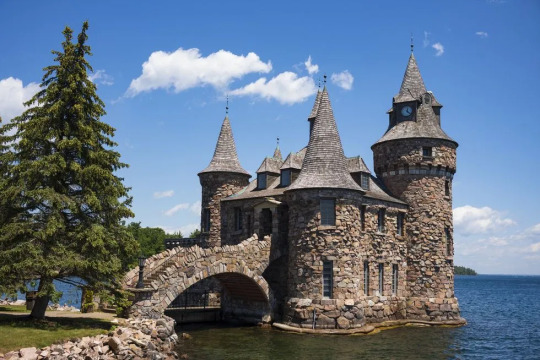
Exploring the United States reveals a surprising array of castles, each with its own unique charm and history. Whether nestled in scenic landscapes or standing proudly in bustling cities, these castles captivate visitors with their architectural grandeur and storied pasts. Here are the top 11 castles in the US that are a must-see for any castle enthusiast:
1. Biltmore Estate
Located in Asheville, North Carolina, the Biltmore Estate is America’s largest privately-owned home. Built by George Washington Vanderbilt II, this grand chateau features stunning architecture, expansive gardens, and a winery.
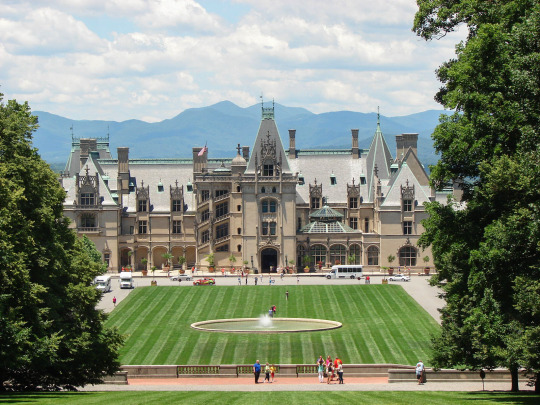
Biltmore Estate | Courtesy: Wikipedia
2. Hearst Castle
Perched atop a hill overlooking the Pacific Ocean in San Simeon, California, Hearst Castle is a masterpiece of opulence. Built by newspaper magnate William Randolph Hearst, it boasts lavish interiors, impressive art collections, and panoramic views.
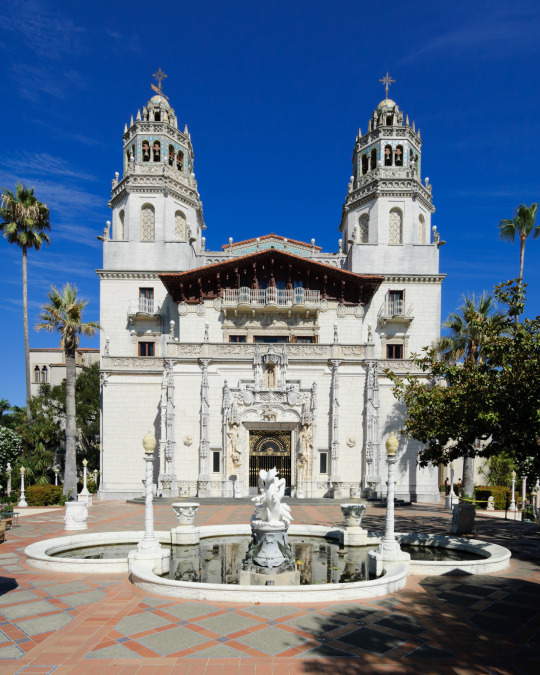
Hearst Castle| Courtesy: Wikipedia
3. Castello Di Amorosa
Napa Valley’s Castello Di Amorosa transports visitors to medieval Tuscany. This authentically styled castle features a winery within its walls, offering tours and tastings amidst its impressive architecture and scenic vineyards.
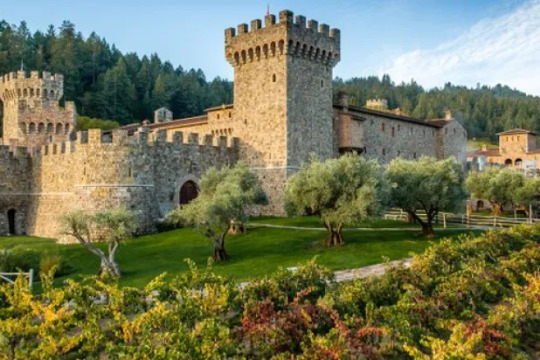
Castello di Amorosa| Courtesy: Tripadvisor
4. Cinderella Castle
An icon of fantasy and magic, Cinderella Castle is the centerpiece of Walt Disney World’s Magic Kingdom in Orlando, Florida. This fairy tale castle is beloved by visitors of all ages for its enchanting design and role in Disney storytelling.
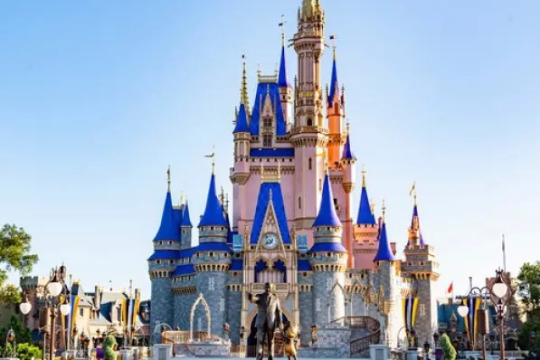
Cinderella Castle| Courtesy: Tripadvisor
5. The Breakers
Located in Newport, Rhode Island, The Breakers is a symbol of the Gilded Age’s extravagance. This Vanderbilt mansion dazzles with its Italian Renaissance-inspired architecture, luxurious interiors, and oceanfront location.
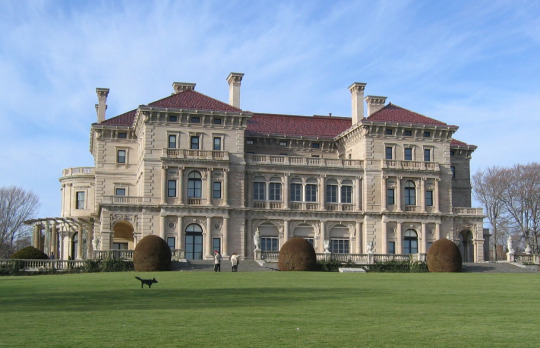
The Breakers| Courtesy: Wikipedia
6. Iolani Palace
Situated in Honolulu, Hawaii, Iolani Palace is the only royal palace in the United States. Built in the 19th century, it served as the official residence of the Hawaiian monarchy and now stands as a National Historic Landmark.
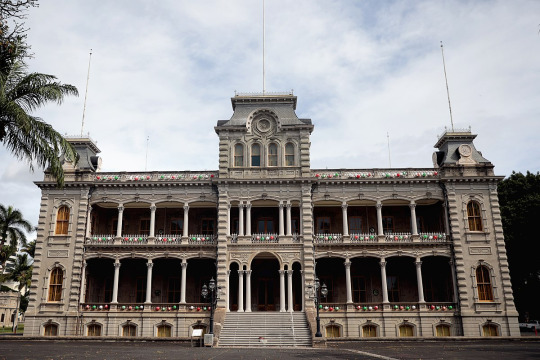
Iolani Palace| Courtesy: Wikipedia
7. Montezuma Castle
In Camp Verde, Arizona, Montezuma Castle showcases remarkable ancient cliff dwellings. Built by the Sinagua people over 600 years ago, this well-preserved structure offers insights into Native American history and architecture.
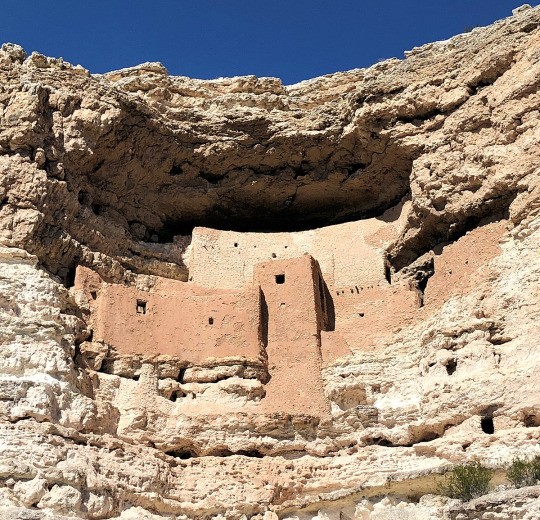
Montezuma Castle National Monument| Courtesy: Wikipedia
8. Boldt Castle
Located on Heart Island in the Thousand Islands of New York, Boldt Castle is a testament to a tragic love story. Built by George C. Boldt as a tribute to his wife, this castle features romantic gardens, intricate stone masonry, and a captivating narrative.
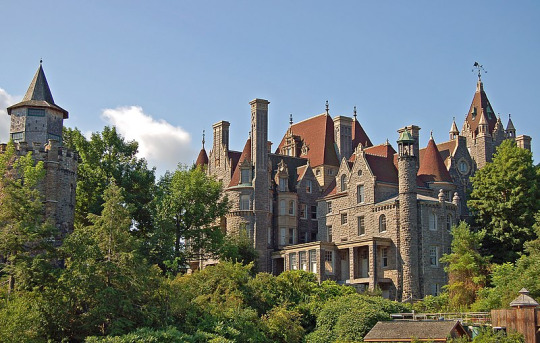
Boldt Castle| Courtesy: Wikipedia
9. Bishop Castle
A remarkable feat of one man’s vision and determination, Bishop Castle in Colorado is a unique and evolving creation. Hand-built by Jim Bishop over several decades, this castle continues to grow in size and complexity, showcasing whimsical architecture and breathtaking views.
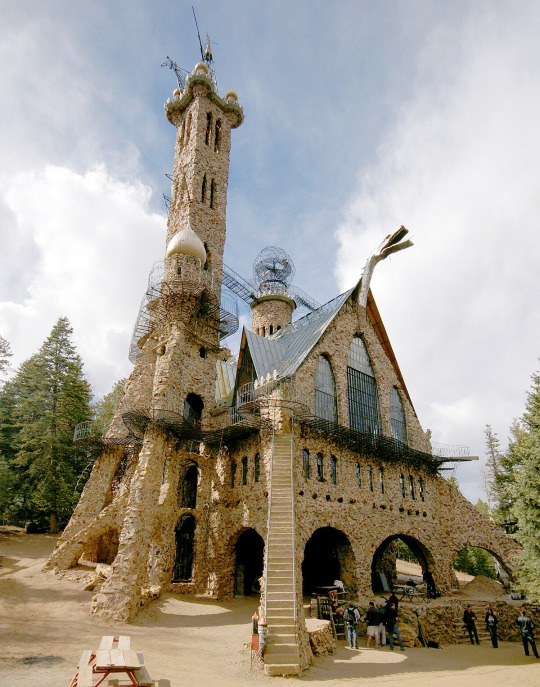
Bishop Castle| Courtesy: Wikipedia
10. Lyndhurst Mansion
Set amidst Tarrytown, New York’s picturesque landscape, Lyndhurst Mansion is a Gothic Revival masterpiece. Designed by Alexander Jackson Davis, it boasts elaborate interiors, scenic grounds, and a rich history dating back to the Gilded Age.
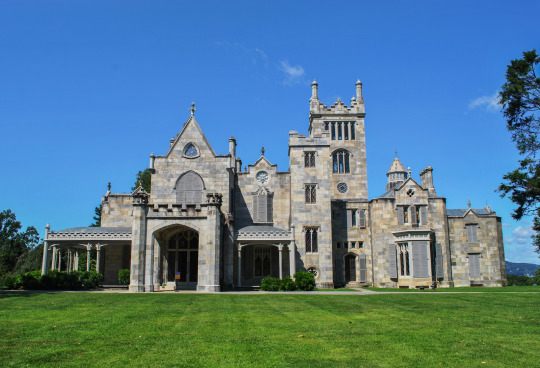
Lyndhurst (mansion) – Courtesy: Wikipedia
11. Bannerman Castle
Located on Pollepel Island along the Hudson River in New York, Bannerman Castle is a striking ruin-turned-tourist attraction. Built by Francis Bannerman VI as a private arsenal, it now offers guided tours showcasing its mysterious past and stunning riverside views.
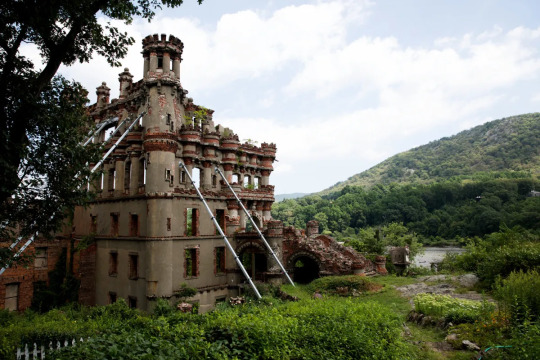
Bannerman Castle | Courtesy: The New York Times
These 11 castles represent a diverse culture of American history, architecture, and culture. Each offers a unique glimpse into different eras and styles, from medieval-inspired wineries to grand Gilded Age mansions and even a fairy tale castle straight out of Disney. Whether you’re drawn to the opulence of Hearst Castle or the rugged charm of Bishop Castle, these destinations promise unforgettable experiences for castle enthusiasts and history buffs alike. Plan your visits to these remarkable sites and immerse yourself in the enchanting world of American castles.
4 notes
·
View notes
Text
Judy Chicago, the Metaphor of Sex and Art
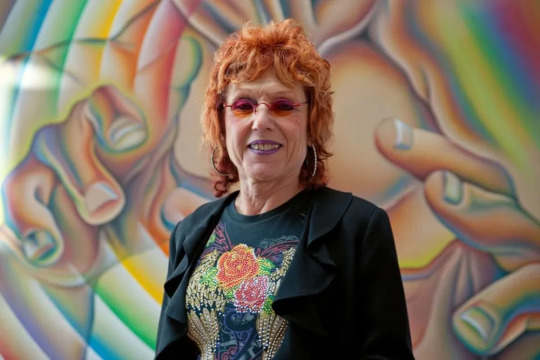
Judy Chicago was born on July 20, 1939, and she became a well-known artist, art educator, and creator of the first feminist art programme in the United States at California State University, Fresno. She is an American feminist artist whose intricate and narrowly focused installations contributed to the women’s liberation movement’s visual presence in the 1970s and beyond. The artist, Judith Sylvia Cohen, was born in Chicago, Illinois, and went to the University of California, Los Angeles, and the Art Institute of Chicago. She began drawing at age five, inspired by her mother, May Cohen, who encouraged her love of the arts.
Judy characterises her previous pieces as minimalist. She worked with pyrotechnics and explosives as performance art, manipulating coloured smoke flashes to create “atmospheres” outside. She debuted as a solo artist at the Rolf Nelson Gallery in Los Angeles. Then, she was one of only four female painters to appear in the Jewish Museum’s inaugural major minimalist exhibition. She made a series of abstract paintings called “Pasadena Lifesavers”, using acrylic paint on Plexiglas to explore her sexuality.
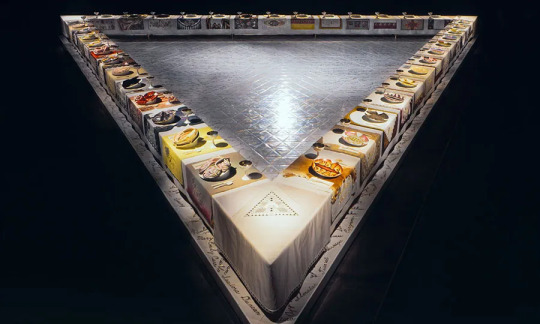
To give the impression that the shapes “turn, dissolve, open, close, vibrate, wiggle,” these works combined colours to depict her realisation that “she was multi-orgasmic.” Her research on women’s sexuality and representation underwent a dramatic sea change after the release of the series.
Chicago’s “The Birth Project” (1980–1985) and “The Holocaust Project” (1985–1993) continue to explore themes related to women’s lives. “The Dinner Party,” her most well-known piece, is permanently displayed in the Brooklyn Museum. The installation consists of a large ceremonial feast on a triangle table, honouring women’s history with sitting arrangements meant for 39 legendary and well-known ladies from mythology. Beneath the triangular table, on the white tile floor, are the gold-inscribed names of nine hundred and nine women.
Judy Chicago and the Feminism
‘Chicago’s fascination with women’s history is one of the defining aspects of her feminism and one of the features that mark her as part of her generational cohort. For Chicago and others coming into feminist consciousness in the late 1960s, the pressing need for a usable women-centred past enlisted history as an element of their political practice. Feminists in the early 1970s also focused on women’s daily resistance practices and renewal strategies. For Chicago, this focus on “ordinary” women would eventually translate into her attention to needlepoint, china painting, and other art forms dismissed by the art world as “craft” in The Dinner Party. But in 1970, women’s history, which she was most interested in writing, was what she called “female art history.” This would involve an intense focus on the female body’, writes Jane Gerhard.
Chicago utilised her courses, which included both men and women, as testing grounds for her feminism during her first teaching term. She declared, for instance, that “only the women talk; none of the men talk” in one of her classes. Some males who thought her views ridiculous and her style harshly booed her. The rate of attrition was high. While some students left school, others vowed to stick with it because they found Chicago challenging and motivating.
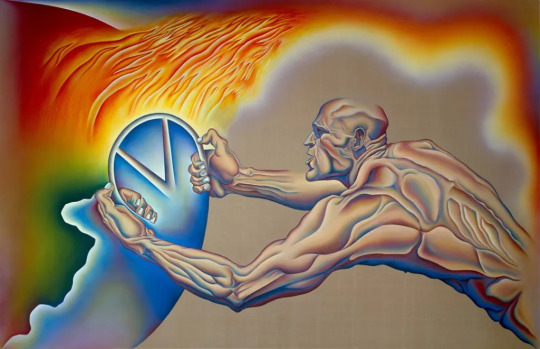
Driving the World to Destruction (1985) by Judy Chicago from the series PowerPlay / Courtesy: Dazed
Midway through the 1970s, the realization of the limitations within heterosocial political groups that had spurred the women’s liberation movement of the 1960s persisted. However, other feminists, notably those in Chicago, saw separation as the solution to those limitations rather than integration. Chicago accepted guys; her actions did not imply this. Instead, she aimed to establish independent, male-free areas where empowered women might unite to build a more just and equal society.
Toward that end, Chicago recreated her studio to be a space where women could encounter the insights of feminism and experience a feminist lifestyle by living and working with other women and where their sense of themselves could be transformed from girlfriends and wives to artists and feminists — goals very similar to those of her classroom. Yet this time, Chicago, not the university, was in charge.
According to Jane Gerhard, ‘Between 1974 and 1979, Chicago mobilized feminist and financial interest in the project by giving public lectures to women’s groups, art groups, and any other venue that would pay her. While touring the country, she sought contacts with people who could help her raise much-needed funds. Later, the publication of her first memoir, Through the Flower, won several converts to her project who were willing to move to California to help her. By the end of 1975, she had a core staff that took on more and more project management.
For More Visit On:www.abirpothi.com
0 notes
Text
Arnold Newman: Composing Art of Portrait Through Camera
Renowned American photographer Arnold Newman is well recognised for his unique approach to environmental portraiture. March 3, 1918, saw his birth in New York City, and he died June 6, 2006. By capturing his subjects in their natural settings and frequently employing dramatic lighting and composition to portray their personalities and occupations, Newman’s approach to portraiture transformed the genre.
Throughout his career, Newman took pictures of many famous people from various areas, including scientists, writers, singers, politicians, artists, and writers. His photographs frequently revealed his subjects’ inner selves and significance in their respective disciplines, capturing the soul of the subjects in a way that went beyond superficial physical likeness.
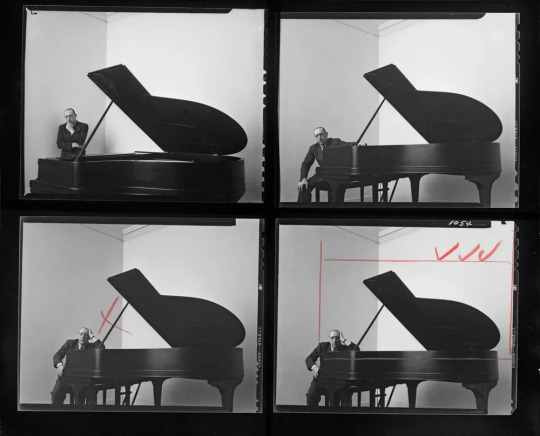
Igor Stravinsky, composer. New York, 1946.Credit…Arnold Newman/Courtesy of Howard Greenberg Gallery
Igor Stravinsky’s piano is depicted in one of Newman’s most well-known pieces, which captures the essence of the legendary musician in his creative setting. Newman’s reputation as one of the most significant portrait photographers of the 20th century has been cemented by the numerous exhibitions and publications of his images.
“When I make a portrait, I don’t take a photograph. I build it.” – Arnold Newman
The scope of Newman’s photographic career is considered in Building Icons, encompassing his early experiments, magazine assignments, creative portraits, corporate work, and reportage projects. The show also emphasises how vital periodicals were in helping to mould Newman’s career by fostering his ambition, educating and inspiring him, and solidifying his reputation. Examining Newman’s interaction with the popular press broadens our perspective on his creations, highlights the ingenuity of his technique, and confirms his indisputable influence on postwar visual culture.
Early Period
Through his work from 1938 to 1945, Newman experimented with abstract approaches, documentary style, and portraiture. Drawing from art reviews and images by various creators, such as the Farm Security Administration photographers Walker Evans, Edward Weston, Erwin Blumenfeld, and Berenice Abbott, he blended his fine art skills with what he saw in magazines.
“I began experimenting in abstraction, abstract realism, and social realism—if one must pigeonhole definitions. I became fascinated with the control of the camera and the ability to make it see as I saw.” –Newman
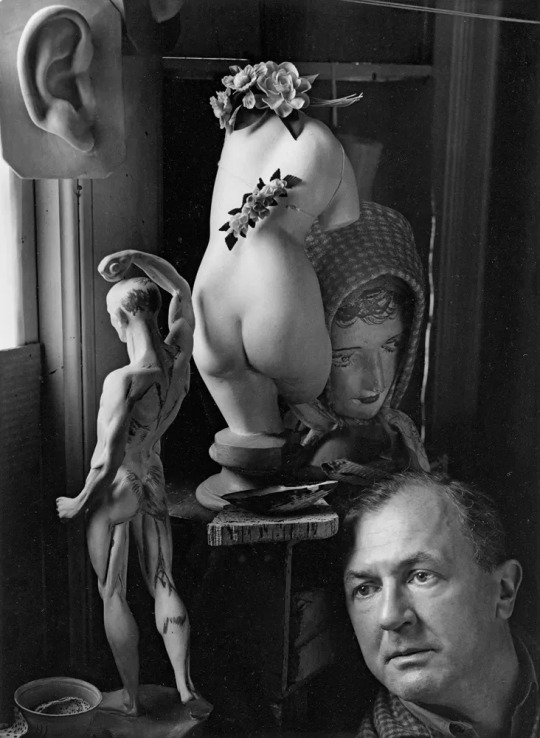
George Grosz, painter. Bayside, New York, 1942.Credit…Arnold Newman/Courtesy of Howard Greenberg Gallery
1938, Newman was employed at the Philadelphia department store Lit Brothers’ photography studio. He took pictures of the streets of the city during his lunch breaks. In the studio’s darkroom, he processed his negatives during the night.
“I read and looked up everything I could find on photography, returning to its beginnings and contemporary workers. My friends produced material from their libraries and freely gave their advice and time. My interest burned strongly within. I went to museums and bought and clipped magazines like Vanity Fair” – Newman
“The portrait is a biography; facts, not fiction or romanticised visions, must be documented.” Today’s magazine contains critical visual details that will become tomorrow’s history textbook. Newman captures his subjects’ lived environments in his “integrative portraits,” also known as environmental portraits. Even though the shots seem natural, Newman deliberately sets up his subjects’ homes or places of employment to highlight a particular facet of their personalities or lines of work. He would set up elements in the background on the walls or arrange them in the foreground to create an atmosphere. Newman developed his ability to read his subjects through careful planning for his photo assignments and a keen sense of how the final photographs would appear on a magazine page.
Photographing his people at their homes and workplaces—studios, living rooms, and other natural settings—set Newman apart from his peers. Because of his methods, Newman was called the father of the “environmental” portrait, but he objected to the title, arguing that his paintings were more appropriately described as “symbolic.” He would “build” his images using the hints he discovered in his subjects’ spaces by doing prior research on them. Newman, who had to drop out of school for financial reasons, had learnt to purposely fumble around the studio or cubicle until the sitter relaxed, especially if they were frightened or reticent.
‘Arnold Newman was a large, rotund, happy man for most of his professional life. He had a beard, curly dark hair, and a penchant for cigars. He loved to tell stories, often on himself. The stories would later constitute his lectures about sitters, who were usually quirky in a very human way. The story of his life was intertwined with the stories he told. Although he was called “the father of the environmental portrait,” Newman maintained that he was not the father of something the Dutch painters had done hundreds of years earlier and that environmental wasn’t the right word. Occasionally, he even took exception to the word portrait. His grudge match with these words was a function of his belief that labels of any kind were restrictive: “The minute you put a label on something, there is no room to move . . . I never thought in [those] terms, and I refuse to think in terms [of] labels”, writes Marianne Fulton in the book, Arnold Newman: At Work.
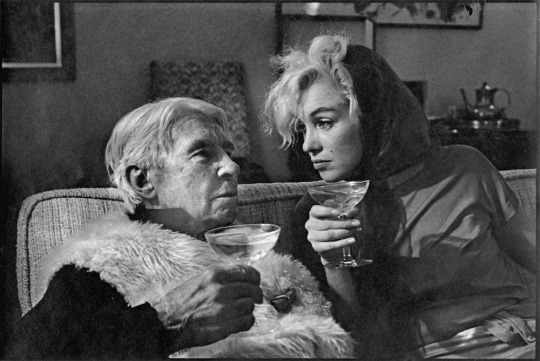
Carl Sandburg, poet and author, and Marilyn Monroe, actor. Hollywood, California, 1962.Credit…Arnold Newman/Courtesy of Howard Greenberg Gallery
Family is essential, as Newman has emphasized throughout his life and career. He developed ties with the spouses and children of his subjects as a result of this crucial idea. Unlike other photographers of the era, Newman often snapped additional family photos while on duty. Nearby are two pictures of American painter Andrew Wyeth: one in his studio alone, the other with his family.
Readers could comprehend the characters’ personalities and vocations because of Newman’s portraiture method, which involved posing his subjects in their homes or places of business while containing their personal belongings. This approach effectively illustrated the accompanying text on the magazine page and the corporate annual report.
For More Visit On: https://abirpothi.com/
0 notes
Text
Few People in the Field of Contemporary Art Arouse Curiosity & Fascination Like Matthew Barney
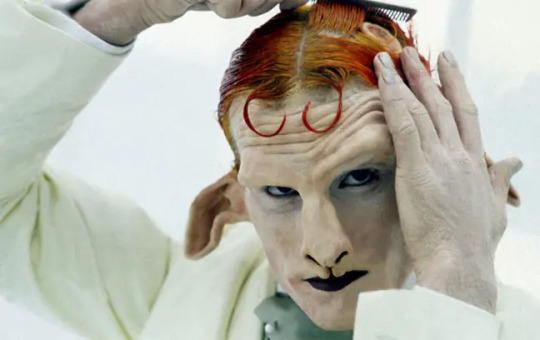
Introduction
Few people in the field of contemporary art arouse curiosity and fascination like Matthew Barney. Recognised for his innovative films and boundary-pushing conceptual works, Barney has made a name for himself in the art world. Let’s examine the many sides of his creative life, including his varied studio practice, personal life, and the renowned Cremaster Cycle.
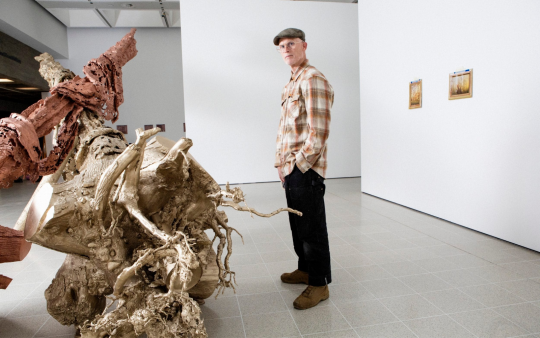
Unraveling the Cremaster Cycle: A Cinematic Odyssey
At the core of Matthew Barney’s artistic legacy lies the mesmerising Cremaster Cycle, a series of five films that defy conventional categorisation. Each instalment is a visual symphony, weaving together themes of biology, mythology, and the human experience. From the surreal landscapes of “Cremaster 1” to the operatic grandeur of “Cremaster 5,” Barney takes viewers on an unforgettable journey through a dreamscape unlike any other.
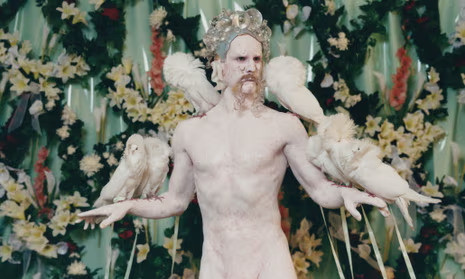
Beyond the Cremaster: Exploring Barney’s Diverse Artistic Endeavours
While the Cremaster Cycle remains a cornerstone of Barney’s work, his artistic exploration extends far beyond its boundaries. His drawings, sculptures, and installations offer further insight into his complex worldview, challenging viewers to delve deeper into the depths of his imagination. Whether exploring the tension between restraint and freedom in “Drawing Restraint” or pushing the boundaries of form and material in his studio practice, Barney’s work continues to captivate and inspire.
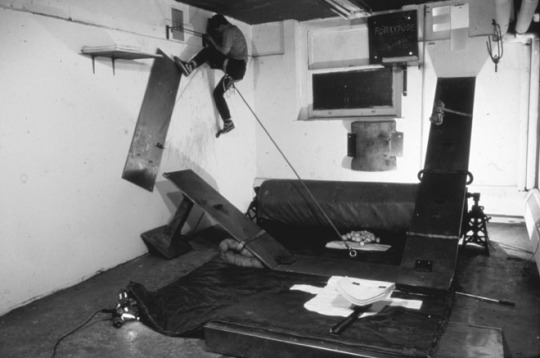
The Artistic Visionary: Matthew Barney’s Pursuit of Innovation
Central to Matthew Barney’s artistic ethos is a relentless pursuit of innovation and experimentation. His films defy narrative conventions, his sculptures defy gravity, and his drawings defy interpretation. Each piece is a testament to Barney’s unwavering commitment to pushing the boundaries of artistic expression, inviting viewers to question, wonder, and engage with the world in new and unexpected ways.
A Figure of Intrigue: Barney’s Collaborations and Personal Life
Beyond his artistic endeavours, Matthew Barney remains a figure of intrigue and speculation. From his collaborations with Björk to his personal life, including his relationship with his girlfriend, Barney’s enigmatic persona adds another layer of complexity to his artistic legacy. Much like his work, Barney defies easy categorisation, embodying a sense of mystery and depth that continues to captivate audiences worldwide.
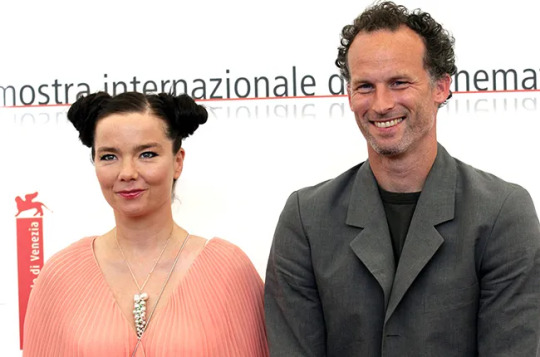
Matthew Barney’s Lasting Legacy
With his innovative work, Matthew Barney is a true visionary in the field of contemporary art, pushing the limits of artistic possibilities. Barney’s artwork never fails to enthrall and inspire, from the fantastical vistas of the Cremaster Cycle to the complex depths of his studio work. It serves as a constant reminder of the transformational potential of creativity to question, provoke, and enlighten the world around us.
Read More on: https://abirpothi.com/
1 note
·
View note
Text
11 Best Rangoli Designs For 2023: Unveiling The Beauty of Rangoli Designs
Rangoli, an ancient Indian art form, is a vibrant and captivating way of adorning the floors of homes and public spaces during festive occasions. This article will look into the world of Rangoli designs, exploring their significance, history, and the process of creating them.
0 notes
Text
Best Drawing Pencils for Beginners to Hit the Write Spot!
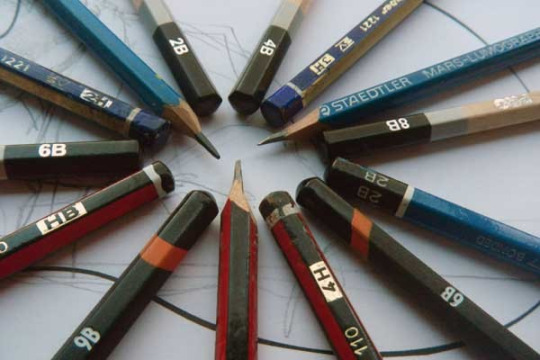
When we learn, we tend to make mistakes right and left. It is these mistakes which educate us on our next steps. Fortunately for us artists, pencils have always been around. We can simply erase our mistakes out of existence. A pencil plays an essential role in any artist’s (whether a novice or seasoned professional) work. Therefore, finding the best drawing pencil is a laborious task. Only through a process of trial and error can you find the right pencil for the precision, shading, and overall quality of your drawings. This article serves as a guide to the infinite world of drawing pencils.
The Diversity in Pencils
When we think of pencils, we think of regular use of graphite pencils, which are easily available to us in our local stationery shops. But your world is about to be shaken for there are a plethora of pencils, all appropriate for different occasions.
Graphite Pencils
The Graphite Pencil is the most common stationary item and perhaps the most versatile. They have a humongous scale of hardness, ranging from 9B (the softest) to 9H (the hardest). The former’s softness assists in shading and drawing dark lines whereas the latter is ideal to craft ultra-fine lines and details. Most aspiring artists start with the F or HB pencils which like Hannah Montana give you the best of both worlds. Hence, graphite pencils are seldom considered the best pencils for drawing and shading.
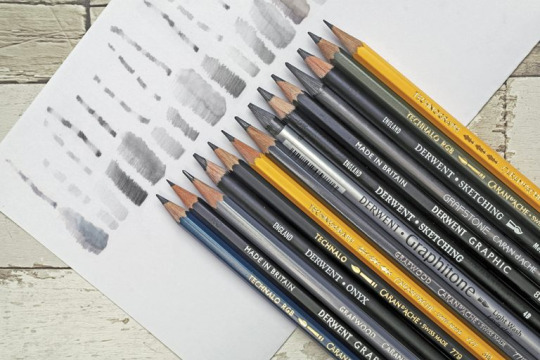
Charcoal Pencils
If you wish to create bold abstracts to express your innermost self, then charcoal pencils are the best pencils for drawing. The lead in the pencils is made of compressed charcoal. This gives your paintings an intense black mark. If you wish to perfect your shading and broad strokes, you must invest in soft charcoal pencils. The harder pencils are more suitable for creating detailed lines. Charcoal pencils are the best drawing pencils for devising dynamic and dramatic sketches.
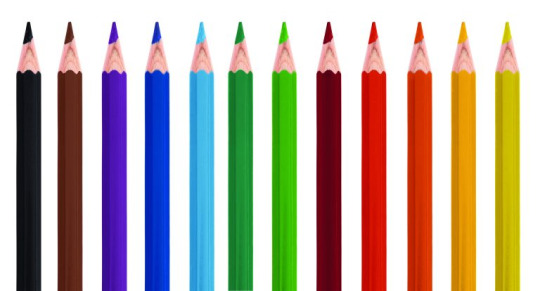
Coloured Pencils
Till now we have only discussed pencils with deep and rich black tones. But who doesn’t like a little colour in their lives? Come to their rescue, coloured pencils. They come in any shade that your imagination can ever concoct. They come in both hard and soft scales to achieve light shading or bold strokes. These are usually the best drawing pencils for professional artists who wish to enliven their detailed sketches with vibrant colours.

Courtesy – Grosvenor House Papers
Mechanical Pencils
The best thing about mechanical pencils is that you would never need a sharpener or eraser again. They are known for their consistent precision. This makes them the best art drawing pencils. They have a humongous range, often used for both technical drawings and detailed portraits. However, you must be careful while selecting the lead thickness, which can alter the desired effect on lines and other intricacies.
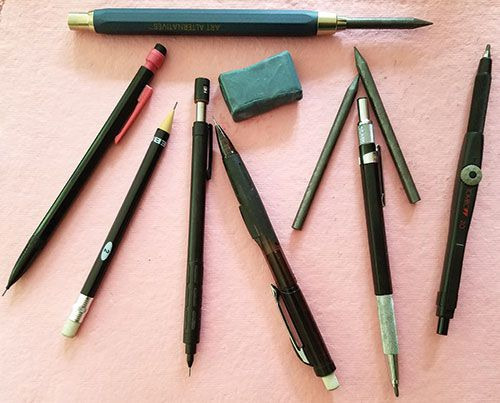
Watercolor Pencils
Now you may experience the precision of pencils and the malleability of watercolors, at the same time. Enter the stage, with watercolor pencils! A mix between the two mediums may be used as traditional coloured pencils or as watercolors (simply add water to achieve the desired look). Watercolor pencils are often considered the best color pencils for realistic drawings as they leave you with a multi-layered watercolor drawing erupting with colors.
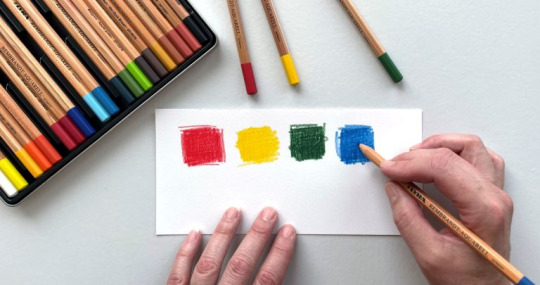
Which ones are the BEST Drawing Pencils?
There are tons and tons (for emphasis even more tons) of pencil brands out there. If you are left baffled; we relate to the experience. In our experience, the following pencils have served us well over the years, and therefore we herald them as some of the best drawing pencils out there.
Faber-Castell 9000 Graphite Pencils
Renowned for their consistent quality, Faber-Castell is already renowned for their consistency in quality. The Faber-Castell 9000 pencils exhibit a ginormous range of hardness to imbue versatility and precision in your drawings. They are the best graphite pencils for drawing owing to the smoothness and consistency of the graphite lead.
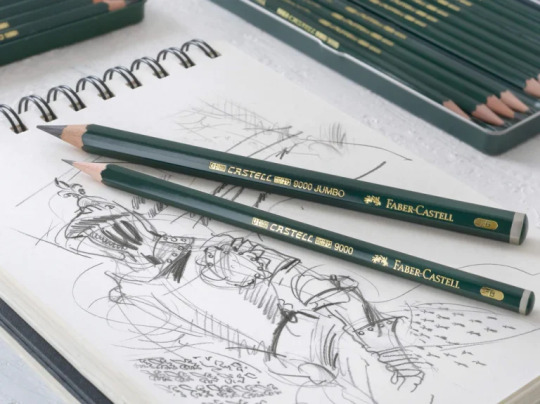
Derwent Charcoal Pencils
Derwent Charcoal Pencils leave vivid deep black traces. The brand is known for its wide hardness range to ensure an even wider range of effects. You will enjoy the bold marks left by what we can attest are the best charcoal pencils for drawing and sketching.
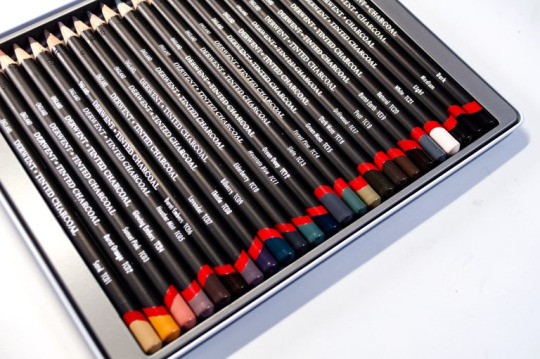
Prismacolor Premier Colored Pencils
Prismacolor Premier are the best colored pencils for drawing. They come in several colours and are smooth and highly pigmented. The pigments help you create layers, which you may choose to blend. Their cores are quite soft, so handle them carefully.
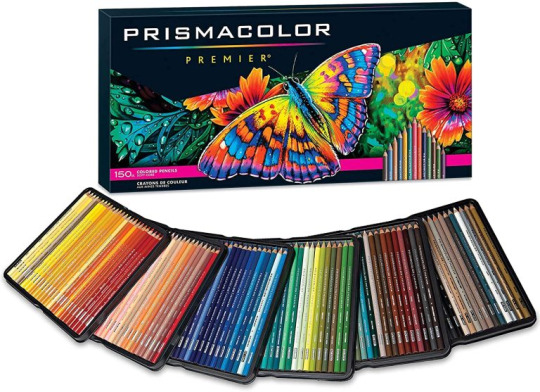
Pentel Twist Erase III Mechanical Pencil
The Pentel Twist Erase III mechanical pencil has a solid plastic exterior and a sturdy rubber grip. It will ensure that you don’t fumble while creating your artwork. It also has a firm metal tip, protecting the fine lead. It comes with a large twist-up eraser to rectify any mistakes that you may make along the way. Even if you drop it, you may rest assured that it won’t break. These qualities are all that we want in the best mechanical pencil for sketching.
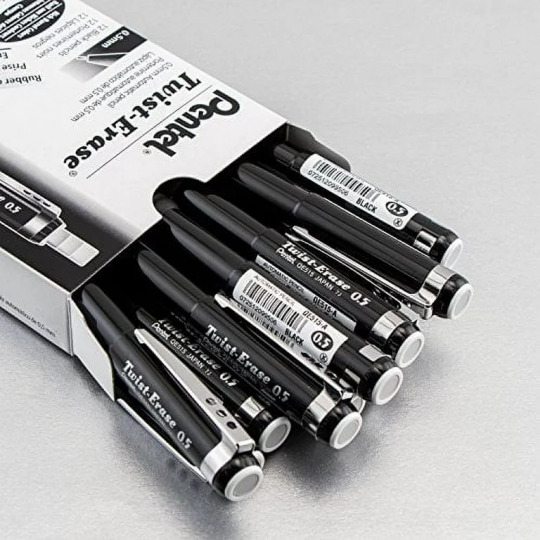
Caran d’Ache Museum Aquarelle Watercolor Pencils
Caran d’Ache Museum Aquarelle is a must-have if you wish to lighten the load of carrying both coloured pencils and watercolors. They are often suggested to aspiring artists for their versatility which aids them in crafting detailed drawings with the vibrancy of watercolors. The colors are extremely water soluble and do not leave any chunky residue.
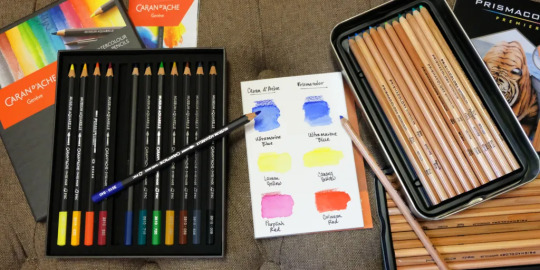
For More Visit On: Art Magazine
0 notes
Text
0 notes
Text
Exploring Impermanence and Sustainability Through Art: The Works of Radhika Kacha and Jathin Jaykumar
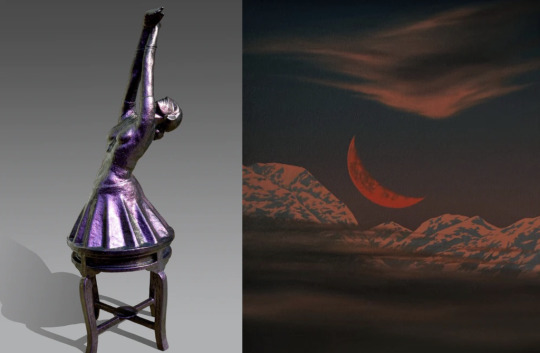
Artists of the week
Artist of the Week is a special category that recognises and highlights the works of talented artists. Each week, two new artists are featured, showcasing their unique styles, techniques, and themes. From emerging artists to established veterans, the Artist of the Week category celebrates creativity and diversity in the art world and provides a platform for artists to share their vision and voice with a wider audience. 1. Radhika Kacha

Radhika Kacha and The Aura Of Glory Courtesy: Abirspace

Scarlet Moonrise by Radhika Kacha Courtesy: Abirspace Radhika Kacha has a deep appreciation for life with natural beauty and the complexity of human emotions. Her art reflects her fascination with the ever-changing sky which she sees as a symbol of impermanence. She believes that the changing colours of the sky throughout the day mirror the ephemeral nature of our lives, and that it is through art that we can capture and celebrate this for Radhika, each stroke of her brush is an expression of the fleeting emotions we experience in our daily lives. She understands that emotions are powerful and important, but fleeting, and she tries to capture this in her work. Using shadows, tints and tones, she creates a constant flow of images, representing the ephemeral nature of everything on earth. Radhika’s work celebrates the impermanence of life and reminds viewers of the importance of nurturing the present moment. Through his paintings, she believes she can evoke wonder and appreciation for the beauty of the world and inspire others to embrace the transitory nature of life With a sensitivity to colour and a deep understanding of the human experience. Radhika’s artistic vision has taken over aesthetically and emotionally. She invites viewers to join her on a journey through the ever-changing sky and discover beauty in its impermanence. Through her art, she hopes to inspire others to embrace the present moment and find joy and wonder in the ever-changing world around us.
2. Jithin Jayakumar
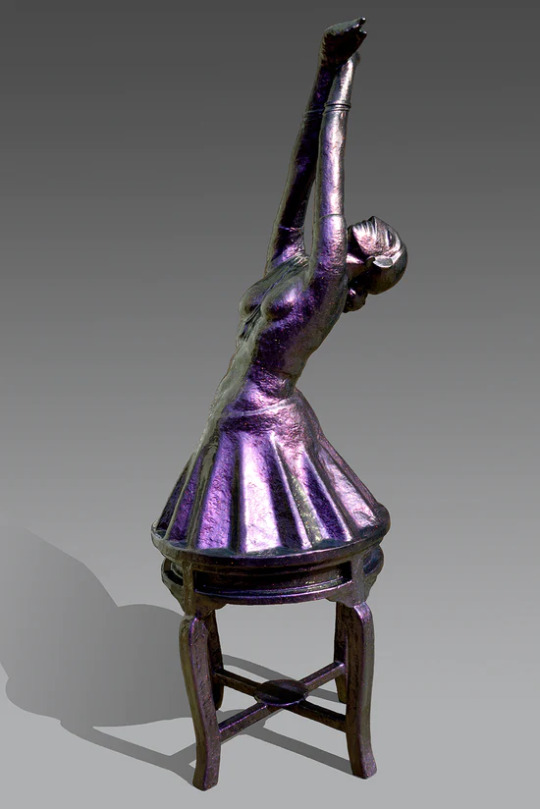
Courtesy: abirspaceObserver by Jithin Jaykumar Courtesy: Abirspace
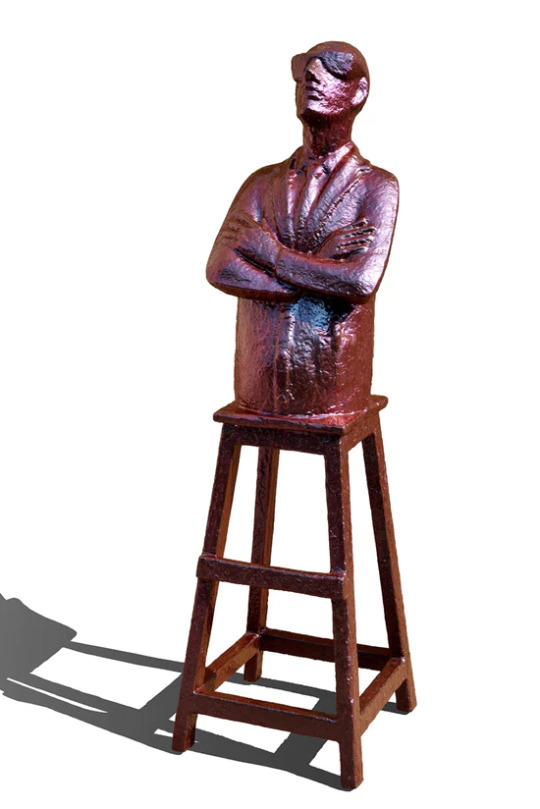
Observer by Jithin Jaykumar Courtesy: Abirspace Jathin’s artistic practice focuses on conflicts over survival on Earth. One of the topics he explores is the inclusion of animals in religious celebrations. It is an interesting topic because it raises questions about the intersection of the spiritual and the natural world. Through his art, he examines how different cultures have incorporated animals into their religious practices and how this reflects their understanding of humans’ relationship with the natural world. Another topic he explores is an urban planning and industrial waste management. This is an integral issue that is becoming increasingly important in our modern world as we deal with the environmental impacts of urbanization and industrialization. Through his artwork, he also explores ways in which cities can be designed to be more sustainable or how we can better manage our waste to reduce our impact on the environment isolation and selfishness in the modern world. This issue becomes increasingly important as our society becomes increasingly connected through technology but in a fragmented and personalized way. The ways in which this isolation and selfishness can be dealt with, or how we can be more empathetic and connected with each other are the recurring themes in Jithin’s artwork. Local guidelines and religious boundaries are important issues in his art. These stories raise questions about the relationship between individual freedom and collective responsibility and about the role of religion in shaping our values and beliefs. For More Visit on: Art Newspaper
0 notes
Text
Tomorrow We Inherit the Earth: Through Zulfikar Ali Bhutto’s lens
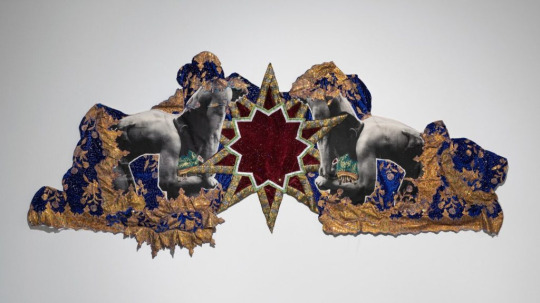
COMO Museum of Art in Lahore, Pakistan is the country’s first ever private museum; it centres around the exhibition and promotion of contemporary and modern art. Their latest solo art exhibition by Zulfikar Ali Bhutto under the title ‘Tomorrow We Inherit the Earth: A Study in Textile’ has been showing from the 28th of February, 2023, and will continue till the month of June.
Born on 1st August 1990 in Damascus, Zulfikar is complex and delightful, funny and subversive, and through his art shatters many clichés about who we are and who we are permitted to be. He obtained his MAH in History of Art from the University of Edinburgh in 2014 as well as an MFA from the San Francisco Art Institute in 2016. As dynamic and versatile as he is, Zulfikar does not restrict himself to one artform; he employs performances, videos, printmaking, textile, embroidery, quilting and storytelling to bring life to his art.
He shares the same name as his grandfather Zulfikar Ali Bhutto, former Prime Minister and President of Pakistan. So, it comes as no surprise that he is intererested
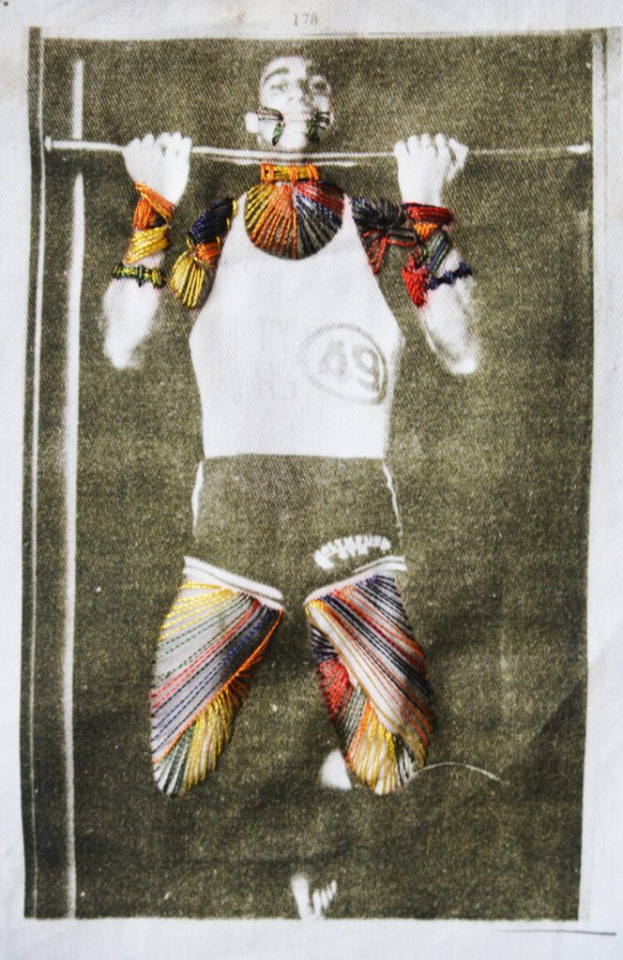
‘Pull ups’, archival inkjet print and embroidery, 2016 Courtesy: Zulfikar Ali Bhutto website
in the politics of the world and inculcates this in his art; his work examines the intricate identity politics created through centuries of colonisation and made worse by the current global politics. He investigates the politics of queerness in his performances, as well as how it sits with Islam and the transitional relationship they share. Zulfikar performs drag under the moniker Faluda Islam and addresses sensitive topics of sexuality, religion, and identity.
Zufilkar is a selfless artist who through his initiatives tries to give a voice to the queer community and give them representation; he was one of three curatorial residencies for the year at SOMArts Cultural Center, where he co-curated the exhibition The Third Muslim: Queer and Trans Muslim Narratives of Resistance and Resilience in January and February 2018. During the month-long series of events, The Third Muslim brought together 16 gay and trans-Muslim artists, performers, and intellectuals.
As per his website, Zulfikar’s latest exhibition ‘Tomorrow We Inherit the Earth: A Study in Textile’ is “an investigation into histories of popular resistance, guerrilla warfare and anti-imperialism in the Middle East, North Africa and South Asia that are then re-interpreted into an archive of an imagined revolution in a post-utopian and post-human world.”
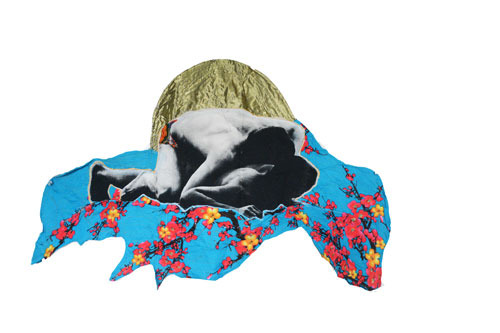
‘Setting Sun’ by Zulfikar Ali Bhutto Courtesy: projectartdivvy The series is created through a three-part process, utilising live performances, videos, and installations made of textiles. Drawing on Shiite Muslim martyrdom and saint worship customs, the tapestries were created “to honour real and imagined queer guerrilla fighters and the weapons they used.”
Zulfikar is unapologetic in his lifestyle and art; which makes his whole being as well as his work even more so genuine and beautiful. So, make sure to pay a visit to the COMO Museum of Art. Better yet, the exhibition is free to everyone so head on over to the museum for an immersive experience with Zulfikar’s work; it will definitely be worth your time.
For More Visit on: Art News
0 notes
Text
Rajesh Ram’s Sculptures Show: Carving the Present with Historical Context
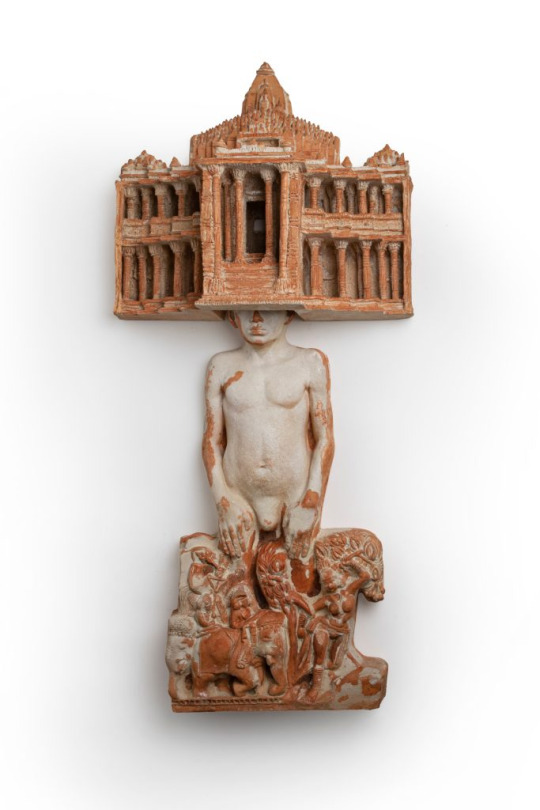
Ved Prakash Bhardwaj
The essence of Rajesh Ram Sculptures is memories, understanding the past, and understanding the threads between the histories made and the histories under construction, i.e., the present, and expressing the impact of power, power of all kinds of politics in human life. His sculptures are a journey from history to the present. In this journey, he gives voice to the contradictions of life. Rajesh Ram creates stories in his sculptures that are very real. For this, sometimes he goes into the history and sometimes while walking in the corridors of the present, he expresses the seen-unseen scenes in the context of human destiny. That’s why there is a kind of conflict in his art. This conflict sometimes appears in a religious-social context and sometimes in the form of crises derived from the power of political power. Will it ever be possible to compensate for the damage caused by pollution in public life due to the power play of religious, social, and political authorities? Rajesh Ram tackles these questions on a creative level. That’s why he calls his sculptures the carvings of time. His initial identity as a sculptor has been as a socially conscious artist. His current exhibition Carving Time is currently running at the Palette Art Gallery, in Delhi. Some of the works of this series were also recently displayed at the India Art Fair 2023.
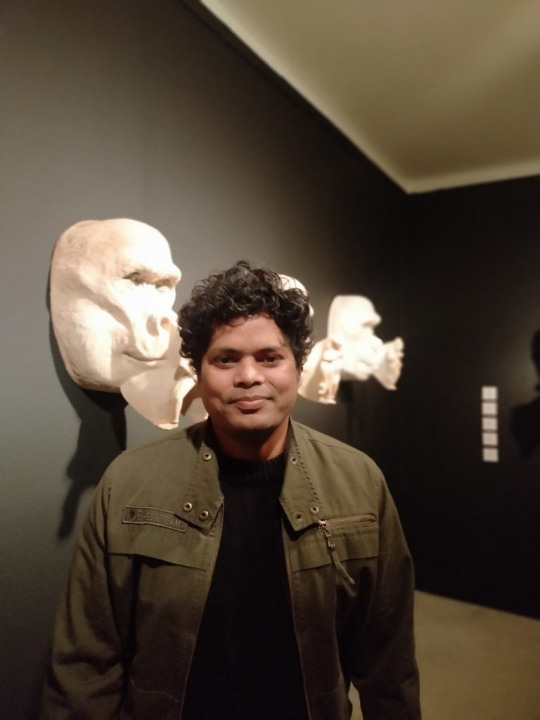
Rajesh Ram Rajesh Ram is known for his analytical presentation of social and political situations in his sculptures. Right from his early sculptures, he started probing the layers of social reality. Through local symbols, he has now come to historical references. In his current exhibition, he has gone back in history and selected some references that represent those innate human tendencies that are present in today’s man as well. He says, “I’m constantly exploring the properties of the place of history amidst a fluidity and movement created with heavy connotations of human reality and the power of politics in the life of man.”
Rajesh Ram’s solo exhibition is going on at Palette Art Gallery, New Delhi. For his recent stoneware sculptures, he has combined two types of sculptures installed in Indian temples with the face of Homo sapiens. On one side there are erotic poses, and on the other side, there are poses of the goddess of knowledge and art. Looking at these sculptures, one gets the impression that the artist has presented the immutable physical and intellectual psyche of man. The expressions on the faces of Homo sapiens reveal the present conditions. On the one hand, there is talk of cultural liberalism, and on the other hand, there is an attack on the arts in the name of obscenity. This contradiction baffles the artist. This is what Rajesh Ram has called the relation of political power to human reality. Rajesh Ram constantly investigates this relationship.
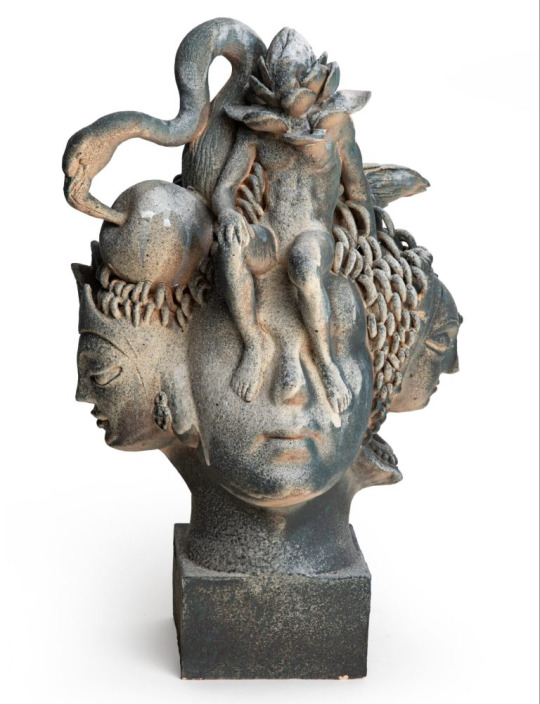
An artwork by Rajesh Ram
Ram’s Homo sapiens series is a Darwinian delight. He juxtaposes Homo sapiens with Indian temple sculptures. “I have always had a fascination for the roots of human history, it creates an unending curiosity within me,” says Ram. “In this sculpture, I am creating a bridge between the past and the present. I have portrayed an erotic figurine style from Indian temple sculptures. I wanted to represent fertility and the procreation of civilizations by making these sculptures. Here I have created 10 Homo sapiens sculptures in different styles and figurations.”
By keeping the past and the present together, he looks towards the future. His work proves that Indian artists have much in their tradition that can be the basis for contemporary art. Stoneware is usually a ceramic art material with most artists doing pottery. Rajesh Ram has given it a new dimension.
On the one hand, the displayed sculptures have the realistic form of the sculptures of Hindu temples, and on the other hand, by combining those sculptures and structures with human faces and other shapes, they create surrealist art. This surrealism also has a contemporary consciousness. Through these crafts, many contemporary realities like increasing animalistic tendencies in man, big heads, and materialistic pressure in the form of houses over the heart come to the fore other shapes, they create surrealist art. This surrealism also has a contemporary consciousness. Through these crafts, many contemporary realities, like increasing animalistic tendencies in men, big heads, and materialistic pressure in the form of houses over the heart, come to the fore. Two crafts that highlight the contradictions between private and public life are Relation of War and Relation and War. There is no narration in these crafts, just an idea that helps the viewer access multiple stories from their own experiences.
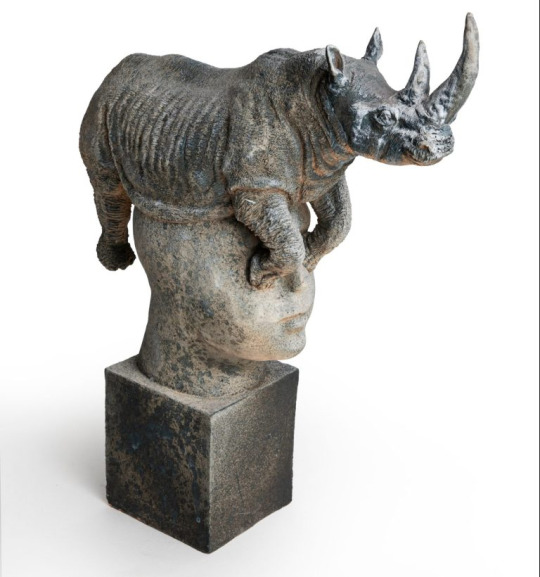
An artwork by Rajesh Ram.
Rajesh Ram has worked in many of his crafts by combining animal or bird faces with human faces. This is an indication of the growing animalism in humans, which is one dimension of their relation to human life in terms of political power. But these crafts have another meaning which indicates the need for ecological balance. Only the balance between all the living beings on earth can save human society.
There are some crafts in this exhibition that point towards the growing materialistic pressures in human life. For example, we can see the structure of the building above the heart in a sculpture. In metropolitan life, on the one hand, people struggle for living space. On the other hand, the concept of home is becoming increasingly vulnerable. A house means a family whose symbol we can see in the form of a building structure.
While working in ceramics, Rajesh Ram has maintained the texture quality of stoneware. These stoneware crafts have softness as well as strength. For this reason, in their composition, these crafts effectively reveal the physical dualities of human life. These crafts awaken our memory. Prompt us to go back in history to understand our times and their contradictions. This can be called a big success of Rajesh Ram. The work of art is not only to awaken an aesthetic sense but also to make man aware of his surroundings.
If we think about all the crafts in this exhibition together, we find that the artist has created such a surreal environment that inspires us to think about life from many directions. Even while sitting in the temple, our mind wanders in many directions; the pressure of material life does not allow it to remain stable. This is the dilemma of today’s life. Rajesh Ram can be said to be composing it as a group of different crafts.
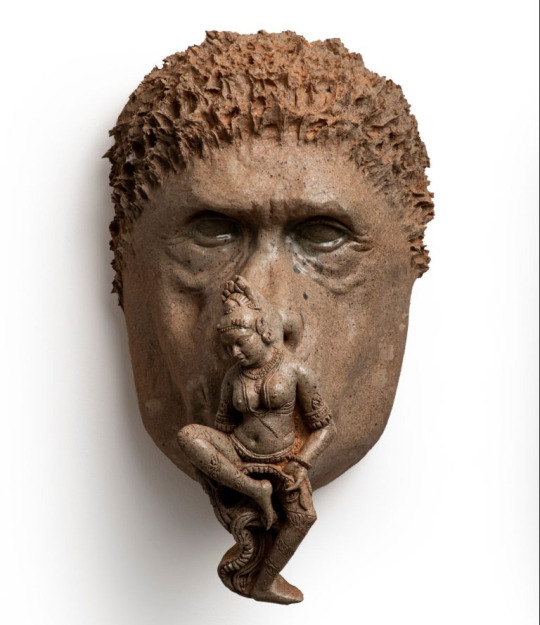
An artwork by Rajesh Ram.
Blending religious art and architecture in some works that are wall stories avoids human and animal depictions, and these constraints seem to be spiritually effective. Visually glorious botanical patterns and small, specific depictions result in something that feels universal. The pillars and arches constructed during the golden age of innovations in math and science seem to have fed such stunning decorative geometries. Human Roots and Spacecraft are two works that play with symbolism and geometry.
“Sculptures and architecture are records of the past,” says Ram. “Somehow we can track the passage of history through these artworks. It also talks about human development and so many journeys. So I portrayed the human brain to show the roots of human existence. I use architectural representation because it is my favourite expression for my art practice.”
In one sculpture, we can see a hippo with its mouth wide open and a man’s head attached. Ram says that when he sculpted this roaring hippo a few years ago, he was describing a story of power and taking notes on a trip through history. Half the head represents the politics behind the throne. “The composition is a scene that describes how my mind describes the reality of history and the beauty of its many elements,” says Ram.
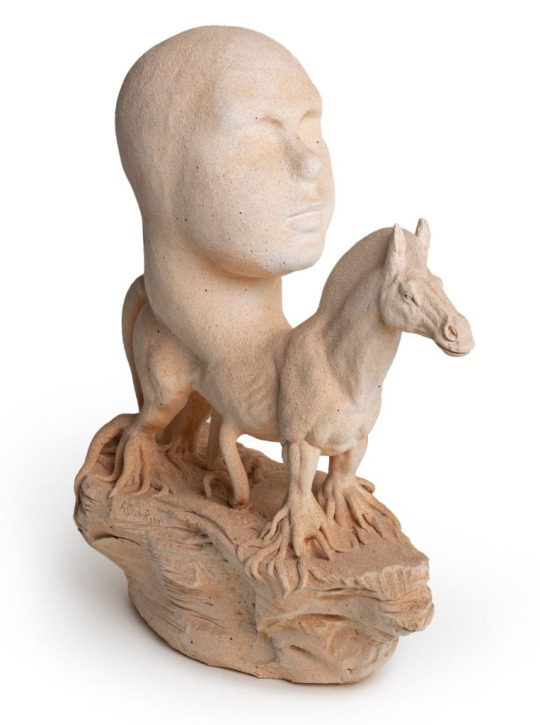
An artwork by Rajesh Ram.
Rama’s hybrid fragments of Purusha (man) and Prakriti (woman or nature) give us a sense of wonder at both inclusion and exclusion. It’s like travelling at a crossroads. Rama transforms these conflicting feelings into his sculptures, creating a contemplative space of his own duality that is open to all. He employs simple means to achieve the dramatic effect: a single human head or figure, as well as the plant’s stems and roots, shine through complex botanical elements made of stone and treated with ash. Each side of these idols is a mark of brilliance in comparison and form, repeating contrasting patterns that Rama designs by combining and adapting various decorative elements in different visits to different parts of the world. Ancient figures and motifs of human and animal faces cast shadows on the gallery walls. No clear boundaries or separations exist within the fusion of human and animal forms; as we move freely through the dense silhouettes in the gallery, our moving eyes transform the nature of the patterns.
For More Visit On: Art News
#art news#artnewspaper#artwork#artist#art#abstract art#art style#sculpture#indian art#indian artists#abirpothi#abir#indian art news
2 notes
·
View notes
Text
Replicas Of Parthenon Marbles To Go On View

While we focus on Indian art, we can’t obviously function in a vacuum. It’s a small world and everything is connected, especially on the web. So, let’s train our spotlight across the world map to see what’s going on — from art trends to socio-political issues to everything that affects the great aesthetic global consciousness. Or, let’s just travel the world and have some fun!
Ultra-Precise digital replicas of the Parthenon marbles on view at Freud Museum

As arguments between the U.K. and Greece rage over who rightfully owns the Parthenon Marbles, the Institute of Digital Archaeology (IDA) has come up with a solution for the meantime: a near-perfect replica—made by a robot—which will go on view at the Freud Museum in London. In January, the Oxford-based institute announced plans to replicate the Parthenon marbles, which originally adorned a temple to Athena atop the Acropolis, with a cutting-edge stone sculpting technology known as Robotor. They wanted to forge a win-win solution for both the U.K. and Greece by making copies for the British Museum’s educational purposes, while returning the original, culturally significant artifacts home to Greece. By August, the institute had taken 3D scans of the marbles, which have lived at the British Museum since Lord Elgin took them from Greece in 1801, under the auspices of the Ottoman Empire, as a gift to Queen Victoria. More on Artnet News.
Chinese Canadian museum names its first chief executive

Melissa Karmen Lee
Just as the Rennie Museum in Vancouver’s Chinatown has closed its doors after 13 years and a farewell exhibition featuring highlights from its extensive collection, the Chinese Canadian Museum (CCM) due to occupy the same space by next summer has hired Melissa Karmen Lee as its inaugural chief executive. “I am thrilled to launch an important institution such as the Chinese Canadian Museum in the oldest building in Vancouver’s Chinatown,” Lee says, referring to the Wing Sang complex first built by a Chinese merchant in 1889. “This is a tremendous opportunity for the museum to offer an authentic place-based experience in sharing the histories and heritage of Chinese Canadian communities.” Lee’s prior experience includes management and development, as well as curatorial, research and programming, including during her time as the curator of education and public programmes at Hong Kong’s Tai Kwun Centre for Heritage and Arts—a Unesco World Heritage site—from 2016 to 2019. When she returned to her hometown of Vancouver in 2019, Lee joined the Vancouver Art Gallery as director of education and public programmes, pioneering new digital initiatives and broadening institutional relationships both locally and internationally. For more, head on to Art Newspaper.
Archives of Laszlo Moholy-Nagy becoming the source of inspiration for NFT artist Dmitri Cherniak

Dmitri Cherniak with the daughter of László Moholy-Nagy
For his latest series, Light Years, algorithmic artist Dmitri Cherniak is taking a fresh pair of eyes to the life and legacy of László Moholy-Nagy. His aim? To illuminate the connections between generative art and the work of the Hungarian artist, technologist, and Bauhaus instructor. A polymath, Moholy-Nagy was one of the earliest artists to integrate technology into his art, using tools such as the telescope, microscope, and photogram to produce his sculptures, photographs, and films. A century on, his innovations in fusing art and technology remain intriguing, informing exhibitions such as the Guggenheim’s “Moholy-Nagy: Future Present” in 2016, while serving as a guiding light for digital creators—not least Cherniak.
Read more on: Art News
0 notes
Text
Grandma Moses: Acclaimed Self-Taught ‘Primitive’ Artist Who Started Painting In Her Late Seventies
Grandma Moses: A journey shows that age is not a bar for learning. In her late seventies, she decided to take up painting which was easier on her hands, as compared to needlework. She made her first painting using house paint. Her work was later displayed in museums and gained appreciation and fame from well-known artists.
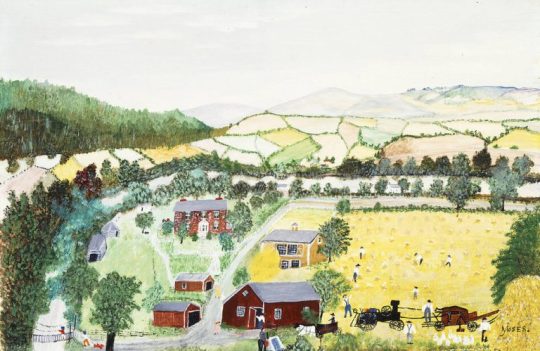
On this day, 7th of September, 1860, Anna Mary Robertson Moses was born in Greenwich, New York, US. She was the third of ten children born to Russell King Robertson, a farmer, and Margaret Shannahan. Due to the lack of warm clothes, Anna Moses attended school only in the summer. At the age of 12 she left home to work as a hired farm girl. At the age of 26, while working for James Family she met Thomas Moses in 1886. The two fell in love and got married the next year. The couple moved to Virginia where they rented farms and worked the land. Anna gave birth to ten children but five of them died as babies. After some years Thomas became homesick, so he asked his wife to move back towards the north. Eventually they returned to New York and bought a farm there. By this time, Anna was called Mother Moses. She was skilled at various tasks and enjoyed doing needlework such as sewing and embroidering. With needle and thread she would make pictures on fabric, but she had developed arthritis, which made it painful for her to push the needle with through the fabric. In her late seventies, she decided to take up painting which was easier on her hands, as compared to needlework. She made her first painting using house paint.
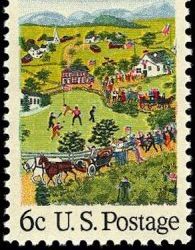
Due to the artist being self-taught her paintings display a lack of nuanced application of Western painting conventions. For this reason, she is categorized as a ‘primitive’ or ‘naïve’ painter under art scholarship, terms synonymous with ‘outsider artist’. Moses’s journey shows that age is not a bar for learning, and that if you’re truly passionate about something, you can reap the rewards of your efforts at any age. Many of Moses’s paintings drew directly from her own life — mainly scenes from the landscape around her. In 1938, her paintings were displayed at a local drug store where an art collector Louis J. Caldor saw them and bought them all for a few dollars each. He inquired about the painter, contacted Moses and bought ten more paintings directly from her. He then arranged to have three of them shown at the New York Museum of Modern Art at an exhibition titled ‘Contemporary Unknown American Painters’, where they attracted wide public attention, leading to her fame. The works were also spotted by the Austrian-American art historian Otto Kallir at the exhibition, and he was highly appreciative of their inherent folk quality. Pleased with her work, Otto curated first solo show titled, ‘What A Farm Wife Painted’ in 1940 at the Galerie St. Etienne in New York. It was at this show that a reporter gave her the nickname, ‘Grandma Moses’.

The New York Times said of her the following: “The simple realism, nostalgic atmosphere and luminous color with which Grandma Moses portrayed simple farm life and rural countryside won her a wide following. She was able to capture the excitement of winter’s first snow, Thanksgiving preparations and the new, young green of oncoming spring… In person, Grandma Moses charmed wherever she went. A tiny, lively woman with mischievous gray eyes and a quick wit, she could be sharp-tongued with a sycophant and stern with an errant grandchild.”
Most of the artist’s paintings depicted scenes from upstate New York and Vermont. Several paintings show a particular ’checkered house’. She painted many scenes depicting farm life. Her paintings told stories about making apple butter, making soap and maple syrup, husking corn, and making candles. ‘The Quilting Bee’ shows how women would meet and visit while they made quilts.
Grandma Moses was awarded two honorary doctoral degrees. The first was bestowed in 1949 by Russell Sage College and the second, two years later by the Moore College of Art and Design. She passed away on December 13, 1961, in a medical center in Hoosick Falls, New York. Her works are included in the collections of the Art Institute of Chicago, the Phillips Collection in Washington, D.C., the Metropolitan Museum of Art in New York, and the Bennington Museum in Vermont. Her work ‘Sugaring Off’ sold at Christie’s New York ‘Important American Paintings’ in 2006 for $1,360,000.
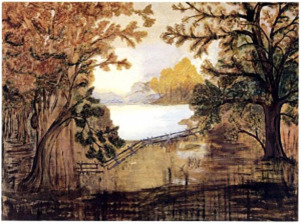
In her autobiographical book Grandma Moses: My Life’s History (1951), the artist testified to the incredible strength and determination to fulfill her own life. She said, “I have written my life in small sketches, a little today, a little yesterday, as I have thought of it, as I remember all the things from childhood on through the years, good ones, and unpleasant ones, that is how they come out and that is how we have to take them. I look back on my life like a good day’s work, it was done and I am satisfied with it. I was happy and content, I knew nothing better and made the best out of what life offered. And life is what we make it, always has been, always will be.”
So, if you think you are too old to pursue your dreams, think of Grandma Moses, and know in your heart it may not be too late for you.
2 notes
·
View notes